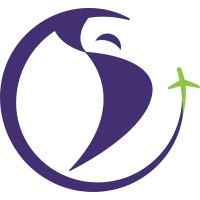
ALTA - Latin American & Caribbean Air Transport Association Company Cyber Security Posture
alta.aeroALTA (Latin American and Caribbean Air Transport Association) is a private, non-profit organization, whose member airlines represent over 80 percent of the region’s commercial air traffic. ALTA coordinates collaborative efforts across the entire value chain, from airlines to suppliers, with authorities, associations and industry stakeholders to facilitate the development of a safer, more efficient and environmentally responsible air transport in Latin America and the Caribbean and maximize the impact that aviation has on the economic and social growth of the region for the mutual benefit of the industry, nations and people served by air transport. ALTA (www.alta.aero), formerly AITAL (International Association of Latin American Air Transport) was founded in Bogota, Colombia, on April 8th, 1980 upon the initiative of 12 flag carriers to join and coordinate the efforts of its members to facilitate the solution of the problems of international air transport in Latin America and strengthen the collaboration and communication between its members for the mutual benefit of air transport in the region and its users.
A-LA&CATA Company Details
alta---latin-american-&-caribbean-air-transport-association
84 employees
22861.0
481
Airlines and Aviation
alta.aero
1
ALT_3644919
In-progress
Between 900 and 1000
This score is AI-generated and less favored by cyber insurers, who prefer the TPRM score.
 A-LA&CATA Global Score
A-LA&CATA Global Score.png)

ALTA - Latin American & Caribbean Air Transport Association Company Scoring based on AI Models
| Model Name | Date | Description | Current Score Difference | Score |
|---|---|---|---|---|
| AVERAGE-Industry | 03-12-2025 | This score represents the average cybersecurity rating of companies already scanned within the same industry. It provides a benchmark to compare an individual company's security posture against its industry peers. | N/A | Between 900 and 1000 |
ALTA - Latin American & Caribbean Air Transport Association Company Cyber Security News & History
| Entity | Type | Severity | Impact | Seen | Url ID | Details | View |
|---|---|---|---|---|---|---|---|
| Latin American airline | Ransomware | 100 | 4 | 7/2024 | ALT000071624 | Link | |
Rankiteo Explanation : Attack with significant impact with customers data leaksDescription: In June 2024, a Latin American airline fell victim to a targeted cyber attack orchestrated using the Akira ransomware. Attackers gained initial access through SSH exploitation of a vulnerability in Veeam Backup & Replication, identified as CVE-2023-27532. Within a brief span of 133 minutes, the attackers escalated their privileges, exfiltrated sensitive documents, images, and spreadsheets containing confidential data, and laid the groundwork for ransomware deployment. The attack disrupted the airline's operations and led to the encryption of their systems with ransomware, resulting in the potential loss of crucial data and substantial operational disruption. | |||||||
ALTA - Latin American & Caribbean Air Transport Association Company Subsidiaries

ALTA (Latin American and Caribbean Air Transport Association) is a private, non-profit organization, whose member airlines represent over 80 percent of the region’s commercial air traffic. ALTA coordinates collaborative efforts across the entire value chain, from airlines to suppliers, with authorities, associations and industry stakeholders to facilitate the development of a safer, more efficient and environmentally responsible air transport in Latin America and the Caribbean and maximize the impact that aviation has on the economic and social growth of the region for the mutual benefit of the industry, nations and people served by air transport. ALTA (www.alta.aero), formerly AITAL (International Association of Latin American Air Transport) was founded in Bogota, Colombia, on April 8th, 1980 upon the initiative of 12 flag carriers to join and coordinate the efforts of its members to facilitate the solution of the problems of international air transport in Latin America and strengthen the collaboration and communication between its members for the mutual benefit of air transport in the region and its users.
Access Data Using Our API

Get company history
.png)
A-LA&CATA Cyber Security News
ICAO Secretary General advocates for strategic priorities and enhanced regional collaboration in South America
Mr. Salazar emphasized how South America's Regional Strategy aligns with this global plan. He outlined priorities such as reducing carbon emissions to net-zero ...
Q&A: in conversation with new ACI director-general Luis Felipe de Oliveira
We meet ACI's new director-general Luis Felipe de Oliveira to talk about ACI, the current pandemic and the future of the organisation ...
Advancing aviation, safety, security and sustainability in Argentina
Turning to aviation safety and security, the Secretary General underlined the crucial importance of ensuring proper resourcing for state civil aviation ...
Avoiding the “flight of tourists” to other destinations in Central America motivates Rodrigo Chaves to stop US$50 flights
President Rodrigo Chaves vetoed the bill approved by legislators last week, which would allow Costa Ricans and visitors to fly in the region at low fares.

A-LA&CATA Similar Companies
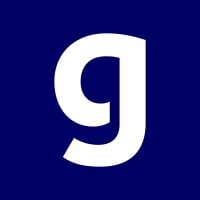
gategroup
gategroup is the global leader in airline catering, retail-on-board and hospitality products and services. gategroup provides passengers with superior culinary and retail experiences, leveraging innovation and advanced technology solutions. Headquartered in Zurich, Switzerland, gategroup delivers op
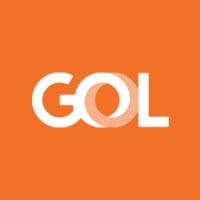
GOL Linhas Aéreas
Somos a maior Companhia Aérea do País e estamos entre as que mais crescem no mundo. A nossa história começou em 2001 e, desde então, somos responsáveis por inovar o mercado da aviação no Brasil. Tudo isso graças à dedicação do nosso Time para garantir o nosso Valor número 1, a Segurança, entregand

Aeromexico
Grupo Aeromexico, S.A.B. de C.V. is a holding company whose subsidiaries are engaged in commercial aviation and the promotion of passenger loyalty programs in Mexico. Aeromexico, Mexico’s global airline, operates more than 600 daily flights and has its main hub in Terminal 2 of the Mexico City Inter
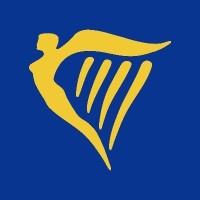
Ryanair - Europe's Favourite Airline
Ryanair Holdings plc, Europe’s largest airline group, is the parent company of Ryanair DAC, Lauda, Buzz and Ryanair UK. Carrying 160m+ guests p.a. on over 3,000 daily flights to/from 225 airports. Plan to carry 225m+ guests p.a. by 2026. Unfortunately, we are unable to answer customer service que
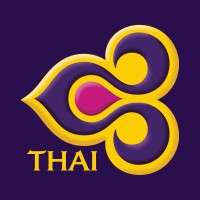
Thai Airways International
Thai Airways International Public Company Limited (THAI) is a public company registered in The Securities Exchange of Thailand since 1991 with the Ministry of Finance as a dominant shareholder of 47.86 percent. THAI operates the airlines business as a full service carrier, which provides the transp

Ethiopian Airlines
Ethiopian Airlines Group (Ethiopian) is the fastest growing Airline Group in Africa. In its seventy plus years of operation, Ethiopian has become one of the continent’s leading carriers, unrivaled in efficiency and operational success. Ethiopian commands the lion’s share of the Pan-African passe

Frequently Asked Questions (FAQ) on Cybersecurity Incidents
A-LA&CATA CyberSecurity History Information
Total Incidents: According to Rankiteo, A-LA&CATA has faced 1 incidents in the past.
Incident Types: The types of cybersecurity incidents that have occurred include ['Ransomware'].
Total Financial Loss: The total financial loss from these incidents is estimated to be {total_financial_loss}.
Cybersecurity Posture: The company's overall cybersecurity posture is described as ALTA (Latin American and Caribbean Air Transport Association) is a private, non-profit organization, whose member airlines represent over 80 percent of the region’s commercial air traffic. ALTA coordinates collaborative efforts across the entire value chain, from airlines to suppliers, with authorities, associations and industry stakeholders to facilitate the development of a safer, more efficient and environmentally responsible air transport in Latin America and the Caribbean and maximize the impact that aviation has on the economic and social growth of the region for the mutual benefit of the industry, nations and people served by air transport. ALTA (www.alta.aero), formerly AITAL (International Association of Latin American Air Transport) was founded in Bogota, Colombia, on April 8th, 1980 upon the initiative of 12 flag carriers to join and coordinate the efforts of its members to facilitate the solution of the problems of international air transport in Latin America and strengthen the collaboration and communication between its members for the mutual benefit of air transport in the region and its users..
Detection and Response: The company detects and responds to cybersecurity incidents through {description_of_detection_and_response_process}.
Incident Details
Incident 1: Ransomware Attack
Title: {Incident_Title}
Description: {Brief_description_of_the_incident}
Date Detected: {Detection_Date}
Date Publicly Disclosed: {Disclosure_Date}
Date Resolved: {Resolution_Date}
Type: {Type_of_Attack}
Attack Vector: {Attack_Vector}
Vulnerability Exploited: {Vulnerability}
Threat Actor: {Threat_Actor}
Motivation: {Motivation}
Incident 2: Data Breach
Title: {Incident_Title}
Description: {Brief_description_of_the_incident}
Date Detected: {Detection_Date}
Date Publicly Disclosed: {Disclosure_Date}
Date Resolved: {Resolution_Date}
Type: {Type_of_Attack}
Attack Vector: {Attack_Vector}
Vulnerability Exploited: {Vulnerability}
Threat Actor: {Threat_Actor}
Motivation: {Motivation}
Common Attack Types: As of now, the company has not encountered any reported incidents involving common cyberattacks.
Identification of Attack Vectors: The company identifies the attack vectors used in incidents through {description_of_identification_process}.
Impact of the Incidents
Incident 1: Ransomware Attack
Financial Loss: {Financial_Loss}
Data Compromised: {Data_Compromised}
Systems Affected: {Systems_Affected}
Downtime: {Downtime}
Operational Impact: {Operational_Impact}
Conversion Rate Impact: {Conversion_Rate_Impact}
Revenue Loss: {Revenue_Loss}
Customer Complaints: {Customer_Complaints}
Brand Reputation Impact: {Brand_Reputation_Impact}
Legal Liabilities: {Legal_Liabilities}
Identity Theft Risk: {Identity_Theft_Risk}
Payment Information Risk: {Payment_Information_Risk}
Incident 2: Data Breach
Financial Loss: {Financial_Loss}
Data Compromised: {Data_Compromised}
Systems Affected: {Systems_Affected}
Downtime: {Downtime}
Operational Impact: {Operational_Impact}
Conversion Rate Impact: {Conversion_Rate_Impact}
Revenue Loss: {Revenue_Loss}
Customer Complaints: {Customer_Complaints}
Brand Reputation Impact: {Brand_Reputation_Impact}
Legal Liabilities: {Legal_Liabilities}
Identity Theft Risk: {Identity_Theft_Risk}
Payment Information Risk: {Payment_Information_Risk}
Average Financial Loss: The average financial loss per incident is {average_financial_loss}.
Commonly Compromised Data Types: The types of data most commonly compromised in incidents are {list_of_commonly_compromised_data_types}.
Incident 1: Ransomware Attack
Entity Name: {Entity_Name}
Entity Type: {Entity_Type}
Industry: {Industry}
Location: {Location}
Size: {Size}
Customers Affected: {Customers_Affected}
Incident 2: Data Breach
Entity Name: {Entity_Name}
Entity Type: {Entity_Type}
Industry: {Industry}
Location: {Location}
Size: {Size}
Customers Affected: {Customers_Affected}
Response to the Incidents
Incident 1: Ransomware Attack
Incident Response Plan Activated: {Yes/No}
Third Party Assistance: {Yes/No}
Law Enforcement Notified: {Yes/No}
Containment Measures: {Containment_Measures}
Remediation Measures: {Remediation_Measures}
Recovery Measures: {Recovery_Measures}
Communication Strategy: {Communication_Strategy}
Adaptive Behavioral WAF: {Adaptive_Behavioral_WAF}
On-Demand Scrubbing Services: {On_Demand_Scrubbing_Services}
Network Segmentation: {Network_Segmentation}
Enhanced Monitoring: {Enhanced_Monitoring}
Incident 2: Data Breach
Incident Response Plan Activated: {Yes/No}
Third Party Assistance: {Yes/No}
Law Enforcement Notified: {Yes/No}
Containment Measures: {Containment_Measures}
Remediation Measures: {Remediation_Measures}
Recovery Measures: {Recovery_Measures}
Communication Strategy: {Communication_Strategy}
Adaptive Behavioral WAF: {Adaptive_Behavioral_WAF}
On-Demand Scrubbing Services: {On_Demand_Scrubbing_Services}
Network Segmentation: {Network_Segmentation}
Enhanced Monitoring: {Enhanced_Monitoring}
Incident Response Plan: The company's incident response plan is described as {description_of_incident_response_plan}.
Third-Party Assistance: The company involves third-party assistance in incident response through {description_of_third_party_involvement}.
Data Breach Information
Incident 2: Data Breach
Type of Data Compromised: {Type_of_Data}
Number of Records Exposed: {Number_of_Records}
Sensitivity of Data: {Sensitivity_of_Data}
Data Exfiltration: {Yes/No}
Data Encryption: {Yes/No}
File Types Exposed: {File_Types}
Personally Identifiable Information: {Yes/No}
Prevention of Data Exfiltration: The company takes the following measures to prevent data exfiltration: {description_of_prevention_measures}.
Handling of PII Incidents: The company handles incidents involving personally identifiable information (PII) through {description_of_handling_process}.
Ransomware Information
Incident 1: Ransomware Attack
Ransom Demanded: {Ransom_Amount}
Ransom Paid: {Ransom_Paid}
Ransomware Strain: {Ransomware_Strain}
Data Encryption: {Yes/No}
Data Exfiltration: {Yes/No}
Ransom Payment Policy: The company's policy on paying ransoms in ransomware incidents is described as {description_of_ransom_payment_policy}.
Data Recovery from Ransomware: The company recovers data encrypted by ransomware through {description_of_data_recovery_process}.
Regulatory Compliance
Incident 1: Ransomware Attack
Regulations Violated: {Regulations_Violated}
Fines Imposed: {Fines_Imposed}
Legal Actions: {Legal_Actions}
Regulatory Notifications: {Regulatory_Notifications}
Incident 2: Data Breach
Regulations Violated: {Regulations_Violated}
Fines Imposed: {Fines_Imposed}
Legal Actions: {Legal_Actions}
Regulatory Notifications: {Regulatory_Notifications}
Regulatory Frameworks: The company complies with the following regulatory frameworks regarding cybersecurity: {list_of_regulatory_frameworks}.
Ensuring Regulatory Compliance: The company ensures compliance with regulatory requirements through {description_of_compliance_measures}.
Lessons Learned and Recommendations
Incident 1: Ransomware Attack
Lessons Learned: {Lessons_Learned}
Incident 2: Data Breach
Lessons Learned: {Lessons_Learned}
Incident 1: Ransomware Attack
Recommendations: {Recommendations}
Incident 2: Data Breach
Recommendations: {Recommendations}
Key Lessons Learned: The key lessons learned from past incidents are {list_of_key_lessons_learned}.
Implemented Recommendations: The company has implemented the following recommendations to improve cybersecurity: {list_of_implemented_recommendations}.
References
Additional Resources: Stakeholders can find additional resources on cybersecurity best practices at {list_of_additional_resources}.
Investigation Status
Incident 1: Ransomware Attack
Investigation Status: {Investigation_Status}
Incident 2: Data Breach
Investigation Status: {Investigation_Status}
Communication of Investigation Status: The company communicates the status of incident investigations to stakeholders through {description_of_communication_process}.
Stakeholder and Customer Advisories
Incident 1: Ransomware Attack
Stakeholder Advisories: {Stakeholder_Advisories}
Customer Advisories: {Customer_Advisories}
Incident 2: Data Breach
Stakeholder Advisories: {Stakeholder_Advisories}
Customer Advisories: {Customer_Advisories}
Advisories Provided: The company provides the following advisories to stakeholders and customers following an incident: {description_of_advisories_provided}.
Initial Access Broker
Incident 1: Ransomware Attack
Entry Point: {Entry_Point}
Reconnaissance Period: {Reconnaissance_Period}
Backdoors Established: {Backdoors_Established}
High Value Targets: {High_Value_Targets}
Data Sold on Dark Web: {Yes/No}
Incident 2: Data Breach
Entry Point: {Entry_Point}
Reconnaissance Period: {Reconnaissance_Period}
Backdoors Established: {Backdoors_Established}
High Value Targets: {High_Value_Targets}
Data Sold on Dark Web: {Yes/No}
Monitoring and Mitigation of Initial Access Brokers: The company monitors and mitigates the activities of initial access brokers through {description_of_monitoring_and_mitigation_measures}.
Post-Incident Analysis
Incident 1: Ransomware Attack
Root Causes: {Root_Causes}
Corrective Actions: {Corrective_Actions}
Incident 2: Data Breach
Root Causes: {Root_Causes}
Corrective Actions: {Corrective_Actions}
Post-Incident Analysis Process: The company's process for conducting post-incident analysis is described as {description_of_post_incident_analysis_process}.
Corrective Actions Taken: The company has taken the following corrective actions based on post-incident analysis: {list_of_corrective_actions_taken}.
Additional Questions
General Information
Ransom Payment History: The company has {paid/not_paid} ransoms in the past.
Last Ransom Demanded: The amount of the last ransom demanded was {last_ransom_amount}.
Last Attacking Group: The attacking group in the last incident was {last_attacking_group}.
Incident Details
Most Recent Incident Detected: The most recent incident detected was on {most_recent_incident_detected_date}.
Most Recent Incident Publicly Disclosed: The most recent incident publicly disclosed was on {most_recent_incident_publicly_disclosed_date}.
Most Recent Incident Resolved: The most recent incident resolved was on {most_recent_incident_resolved_date}.
Impact of the Incidents
Highest Financial Loss: The highest financial loss from an incident was {highest_financial_loss}.
Most Significant Data Compromised: The most significant data compromised in an incident was {most_significant_data_compromised}.
Most Significant System Affected: The most significant system affected in an incident was {most_significant_system_affected}.
Response to the Incidents
Third-Party Assistance in Most Recent Incident: The third-party assistance involved in the most recent incident was {third_party_assistance_in_most_recent_incident}.
Containment Measures in Most Recent Incident: The containment measures taken in the most recent incident were {containment_measures_in_most_recent_incident}.
Data Breach Information
Most Sensitive Data Compromised: The most sensitive data compromised in a breach was {most_sensitive_data_compromised}.
Number of Records Exposed: The number of records exposed in the most significant breach was {number_of_records_exposed}.
Ransomware Information
Highest Ransom Demanded: The highest ransom demanded in a ransomware incident was {highest_ransom_demanded}.
Highest Ransom Paid: The highest ransom paid in a ransomware incident was {highest_ransom_paid}.
Regulatory Compliance
Highest Fine Imposed: The highest fine imposed for a regulatory violation was {highest_fine_imposed}.
Most Significant Legal Action: The most significant legal action taken for a regulatory violation was {most_significant_legal_action}.
Lessons Learned and Recommendations
Most Significant Lesson Learned: The most significant lesson learned from past incidents was {most_significant_lesson_learned}.
Most Significant Recommendation Implemented: The most significant recommendation implemented to improve cybersecurity was {most_significant_recommendation_implemented}.
References
Most Recent Source: The most recent source of information about an incident is {most_recent_source}.
Most Recent URL for Additional Resources: The most recent URL for additional resources on cybersecurity best practices is {most_recent_url}.
Investigation Status
Current Status of Most Recent Investigation: The current status of the most recent investigation is {current_status_of_most_recent_investigation}.
Stakeholder and Customer Advisories
Most Recent Stakeholder Advisory: The most recent stakeholder advisory issued was {most_recent_stakeholder_advisory}.
Most Recent Customer Advisory: The most recent customer advisory issued was {most_recent_customer_advisory}.
Initial Access Broker
Most Recent Entry Point: The most recent entry point used by an initial access broker was {most_recent_entry_point}.
Most Recent Reconnaissance Period: The most recent reconnaissance period for an incident was {most_recent_reconnaissance_period}.
Post-Incident Analysis
Most Significant Root Cause: The most significant root cause identified in post-incident analysis was {most_significant_root_cause}.
Most Significant Corrective Action: The most significant corrective action taken based on post-incident analysis was {most_significant_corrective_action}.
What Do We Measure?
















Every week, Rankiteo analyzes billions of signals to give organizations a sharper, faster view of emerging risks. With deeper, more actionable intelligence at their fingertips, security teams can outpace threat actors, respond instantly to Zero-Day attacks, and dramatically shrink their risk exposure window.
These are some of the factors we use to calculate the overall score:
Identify exposed access points, detect misconfigured SSL certificates, and uncover vulnerabilities across the network infrastructure.
Gain visibility into the software components used within an organization to detect vulnerabilities, manage risk, and ensure supply chain security.
Monitor and manage all IT assets and their configurations to ensure accurate, real-time visibility across the company's technology environment.
Leverage real-time insights on active threats, malware campaigns, and emerging vulnerabilities to proactively defend against evolving cyberattacks.




